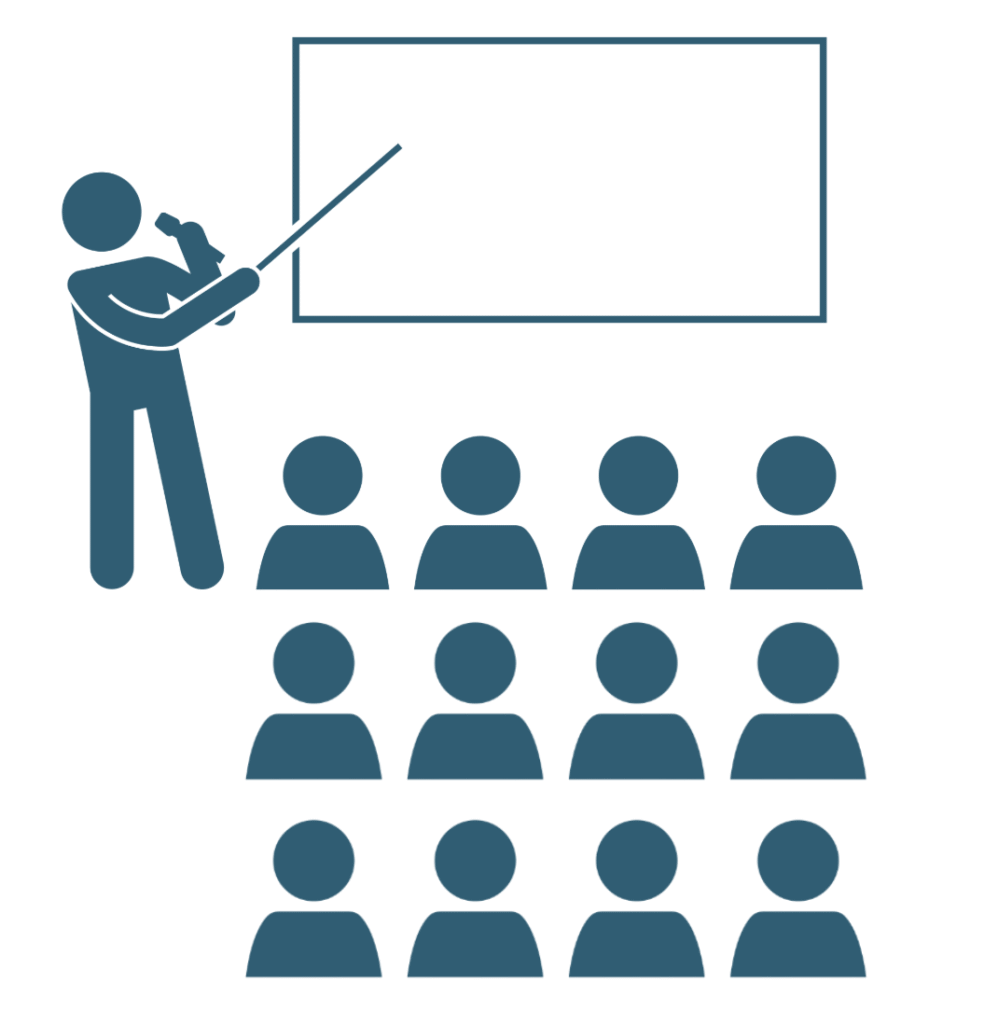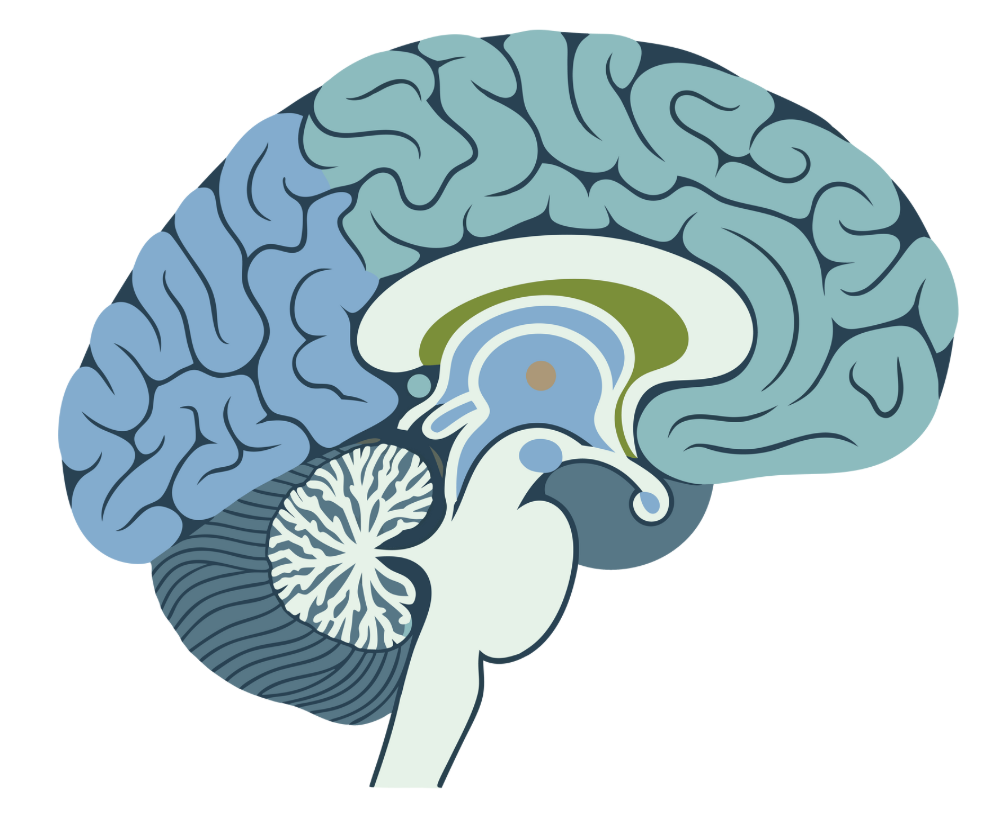Related Podcast Episode
In my series of blogs on multi-tiered systems of support (MTSS), I introduced three pathways educators can use to provide Tier 1 instruction: whole-group instruction paired with a cooperative learning strategy, video paired with an engagement strategy, and differentiated small-group instruction using the Station Rotation Model. In this blog, I’ll focus on whole-group instruction and share how I help teachers design lessons that make this approach a more effective vehicle for Tier 1 instruction.
Despite the challenges that arise when teachers present information live to an entire class (e.g., language barriers, gaps in background knowledge, attention challenges, classroom distractions, or pacing issues), whole-group instruction remains the most commonly used strategy. This blog explores when it works best, so teachers can be more intentional about their instructional choices, and how to design it so students stay engaged and learn more.
When Whole Group Instruction Makes Sense
Whole-group instruction creates a shared learning experience that can help students make collective meaning. It is especially valuable when:
- Launching a new unit or topic to spark curiosity or build background knowledge.
- Engaging students in discussions or debates about the content, where multiple perspectives deepen understanding.
- Introducing foundational concepts that all students need before shifting into differentiated tasks.
- Modeling a process, strategy, or skill that data indicates all students would benefit from, giving them a chance to practice with peer support before applying it independently.
When done well, whole-group instruction can build community and shared purpose. It allows the teacher to connect the class around a common idea, question, problem, or experience.
Yet, in many classrooms, whole-group instruction looks very different. Too often, it’s the teacher talking and students sitting for an extended period, passively listening and trying to absorb information. The teacher might pause occasionally to ask a question; the confident students raise their hands to answer; one student is selected to respond; and the lesson continues. There is little to no interaction, limited participation, and minimal thinking happening for most students.
So while the whole-group instruction can foster shared understanding, in practice it often positions students as passive consumers rather than active participants in their learning. As a result, these instructional sessions can fall flat and fail to deliver effective Tier 1 instruction. To change that, teachers can design whole-group instruction that includes intentional moments of interaction, critical thinking, collaboration, creative problem-solving, and reflection. That’s where chunking and cooperative learning become real game changers!
Chunking to Avoid Cognitive Overload
Teachers often feel pressure to cover as much content as possible as efficiently as possible. However, when we deliver long stretches of uninterrupted information, we risk overwhelming students’ working memory. Stanford’s Center for Teaching and Learning explains that, “Working memory is the conscious part of our memory where we temporarily store information, keep track of what we are doing, and make connections between new and old material.” Cognitive load theory indicates that students can hold only 3-5 pieces of new information in mind at once before reaching capacity. Neurodiverse students may face greater challenges with working memory, which can make it harder to retain new information long enough to move it into long-term memory.
When I work with educators, I encourage them to break lectures and mini-lessons into 5-minute chunks. Each segment or chunk should focus on a clear concept or step in a process. Then this new information must be followed by time for students to process, discuss, or apply what they just learned. This teach-pause-engage-apply rhythm helps students connect new ideas to prior knowledge and process what they are learning. It also addresses the reality that attention naturally fades during lengthy instructional sessions and variability in focus increases over time. The problem isn’t that students today cannot pay attention; it’s that passive learning environments give them little reason to sustain attention.
Chunking instruction isn’t simply about shortening instruction. It is about reducing cognitive load by limiting the number of new pieces of information students must process at one time. Each pause gives learners a chance to think about and consolidate what they have just learned before new information is introduced. Below is an overview of the benefits of chunking for students and teachers.
Benefits for Students
- Reduces cognitive load. Students can only process so much information at once. Smaller amounts of information are easier to hold in working memory.
- Creates time to apply. Pausing creates time for students to talk, think, and connect ideas, moving from passive listening to active learning.
- Boosts engagement. Frequent breaks signal that student participation is expected and valued.
- Invites more voices. Discussion time helps students hear and build on different perspectives.
Benefits for Teachers
- Creates opportunities to check for understanding. Each pause creates a natural moment to listen to student thinking and identify misconceptions.
- Keeps the energy high. Instead of fighting attention fatigue, teachers harness natural cycles of focus, interaction, and reset.
- Makes it easier to be responsive. Based on what students share, teachers can pivot, reteach, or extend the next chunk of instruction.
- Strengthens relationships. Students are engaging with one another, which builds community.
Let’s look at an example. Imagine a middle school history teacher is introducing the causes of the American Revolution. Instead of lecturing for 20 minutes straight, the teacher could break the lesson into four shorter chunks.
Chunk 1: Introduce the concept of taxation without representation
The teacher begins by explaining what “taxation without representation” meant to the colonists and why they felt it was unjust.
Chunk 2: Explore the Stamp Act as a turning point
The teacher explains the Stamp Act and why it angered colonists using a relatable scenario, emphasizing the new taxes and lack of representation.
Chunk 3: Compare other acts that escalated tension
The teacher introduces one or two additional acts (e.g., Townshend or Tea Acts), comparing them to the Stamp Act to show how resentment grew over time.
Chunk 4: Explore how individual acts of protest evolved into a movement
Finally, the teacher explains how local acts of defiance, such a boycotts and protests, grew into organized resistance through groups like the Sons of Liberty. The goal is to help students see how isolated reactions became a coordinated push for independence.
Each chunk focuses on a key idea, allowing students to absorb, process, and make sense of the material before moving on. Between these instructional chunks, teachers can use a cooperative learning strategy to prompt discussion, problem-solving, and application.
Chunking isn’t limited to lectures in content-heavy subjects like history and science. A teacher reading a complex text with students can pause periodically to check for understanding, ask interpretive or analytical questions, or invite students to discuss the author’s purpose or thematic development before continuing. In math, a teacher modeling a multi-step process, such as solving an equation or applying a formula, can break the demonstration into smaller parts. Between each step, students can work in groups to solve a related problem, compare approaches, identify potential errors, and explain their mathematical reasoning. These brief pauses keep students cognitively active, clarify misconceptions in real time, and help them see how each step connects to the larger concept or skill being taught.
Using Cooperative Learning to Keep Students Cognitively Engaged
Chunking information gives students the space to process new information, but what they do during the time between chunks will determine how well they learn the content. Simply pausing isn’t enough. Students need to actively make sense of what they’ve heard by discussing, questioning, and applying it with peers.
Cooperative learning strategies keep students cognitively engaged during the pauses between chunks of instruction. Learners stay attentive and strengthen their understanding when they collaborate to explain an idea, justify their thinking, or solve a problem. Research also shows that cooperative learning improves motivation, learning outcomes, comprehension, and skill development.
In practice, this means turning every pause into an opportunity for thinking and conversation. After a short chunk of instruction, teachers can use a quick pair or group activity to prompt students to process what they just learned, connect it to prior knowledge, and prepare for what comes next.
One of my favorite cooperative learning strategies to pair with whole-group instruction is Numbered Heads Together (NHT), developed by Dr. Spencer Kagan. I like this strategy because it:
- Promotes active engagement: Every student is responsible for understanding the content and contributing.
- Increases accountability: Because any student’s number may be called, all group members must be prepared to share.
- Encourages collaboration: Students work together to discuss, explain, and clarify thinking, strengthening understanding through peer-to-peer teaching.
- Supports diverse learners: Provides time for all students to process information, ask questions, and rehearse responses.
- Builds confidence: Students are more likely to feel comfortable sharing their ideas after having time to discuss their thinking with their peers.
Here’s an overview of how NHT works:
Step 1: Create heterogeneous groups of four students with a nice mix of skills and abilities. Assign each person in the group a number 1 to 4.
Step 2: Pose a question or problem related to the chunk of content you just taught.
Step 3: Give students 60-90 seconds to think about the question individually and jot down their initial thoughts. This provides students with time to process the question before they transition into a discussion.
Step 4: Ask groups to put their heads together and discuss the question or problem to identify the most accurate or complete answer. Remind them that every student in each group needs to understand and be able to explain the group’s answer.
Step 5: Randomly call a number 1-4 and have all the students in the class with that number stand up. So, all the 3s will stand. Then randomly select a table or team number to identify the specific person who will share their group’s answer.
Tip: Use an AI chatbot to randomly select the NHT number and the table or team number so students don’t think you are making intentional choices about who to call.
Step 6: Invite the other students with the same number to agree, disagree, or build on the first group’s explanation or answer.
When teachers use NHT between short bursts of instruction, students are constantly moving between listening, thinking, discussing, and applying. This structure holds everyone accountable for participating, encourages peer teaching, and turns direct instruction into an active learning experience. Instead of saving the application and practice for the end, teachers can build interaction and practice directly into the lesson itself. The lecture or mini-lesson will take longer, but students will learn through collaboration, not just by listening and recalling later.
An added benefit is that these moments of interaction give teachers valuable real-time formative assessment data. As they listen to student conversations and hear their responses to questions, teachers can gauge understanding and adjust instruction immediately. This ongoing feedback loop reduces the need for traditional worksheets that teachers typically collect and grade after class. In other words, the assessment happens with students during learning, not after, on the teacher’s time.
Deepening Thinking with DOK Questions
To make cooperative learning moments truly meaningful, the quality of questions matters as much as the structure itself. Webb’s Depth of Knowledge (DOK) framework provides a helpful guide to design questions that prompt students to think more deeply about what they are learning.
The different DOK levels determine the kind of thinking students are asked to do. As teachers move from Level 1 to Level 4, the cognitive demand increases. Students must connect, reason, and apply knowledge in increasingly complex ways.
Here’s how the levels might look in the context of the middle school history example on the causes of the American Revolution.
DOK 1: Recall and Reproduce Information
At this level, students retrieve facts, terms, or basic details to demonstrate initial understanding or the ability to recall information.
Example: What was the Stamp Act? Who imposed new taxes on the colonies?
These questions are useful when checking for comprehension or reviewing key vocabulary. That said, they will not spark interesting discussions in an NHT session. Because they focus on recall rather than reasoning, I caution teachers to avoid DOK 1 questions during these cooperative learning sessions.
DOK 2: Skill and Concepts
These questions push students to process and interpret information rather than simply repeat it. They encourage learners to make connections, organize or interpret information, compare and contrast, or summarize ideas to demonstrate understanding.
Example: How did the Stamp Act and Townshend Acts affect colonial life differently? Why did colonists view these taxes as unfair?
This level is also a good fit for students who are still building confidence in the subject area or are new to using a cooperative learning strategy, such as NHT. It gives them a chance to engage meaningfully with the content while developing the skills and language needed to participate in deeper analysis and augmentation later.
DOK 3: Strategic Thinking
This level encourages reasoning, analysis, and justification to draw conclusions, critique arguments, design solutions, and solve problems.
Example: Which British act do you think had the greatest impact on pushing the colonists toward rebellion? Use evidence to support your position.
At this level, students begin to take more ownership of their thinking. They must make decisions, support their claims and positions with evidence, and clearly communicate their ideas with others. This level of questioning is ideal for students who are ready for more rigor.
DOK 4: Extended Thinking
Students apply learning to new contexts, synthesize ideas, and evaluate complex relationships.
Example: If a similar situation happened today and people were taxed without having a voice in government, how might citizens respond? What might rebellion look like in today’s world compared to the colonists’ actions?
These questions invite learners to connect concepts across time periods, disciplines, or perspectives and to consider the broader implications of what they’ve studied. DOK 4 questions encourage independent thinking, creativity, and problem-solving. They are especially powerful for students who are ready to extend their reasoning beyond the text, lesson, or classroom.
It is critical that teachers come prepared to cooperative learning sessions with pre-planned questions to ensure the questions are high-quality and appropriate for the given group of students. Teachers also do not have to create these questions alone! They can leverage an AI chatbot, like Gemini, or an AI-powered education tool, like MagicSchool, to generate high-quality questions at different depths of knowledge.
Wrap Up
Whole-group instruction doesn’t have to result in passive learning. When teachers chunk content into manageable segments, students have time to process and apply what they are learning.
Adding a cooperative learning strategy, like Numbered Heads Together, keeps every student involved and accountable. Pair that with well-designed questions at the right level of rigor and complexity, and a traditional teacher-led lecture becomes an engaging student-centered experience.
When teachers design direct instruction that intentionally keeps students thinking, talking, and applying what they are learning, Tier 1 instruction becomes stronger and more effective for more learners. The stronger our Tier 1 instruction, the less likely students are to need Tier 2 support or Tier 3 intervention. That’s why refining how we design and deliver whole-group instruction matters. It is a proactive way to meet the needs of diverse groups of learners before gaps appear and widen.
This approach not only elevates Tier 1 instruction but also leverages the collective intelligence of the classroom, encouraging students to use one another as valuable resources in the learning process!
Need Support Improving Tier 1 Instruction?
If your school or district is exploring ways to strengthen Tier 1 instruction, I offer professional learning experiences that help teachers design effective lessons that reach more students. Feel free to reach out to discuss training options.






No responses yet